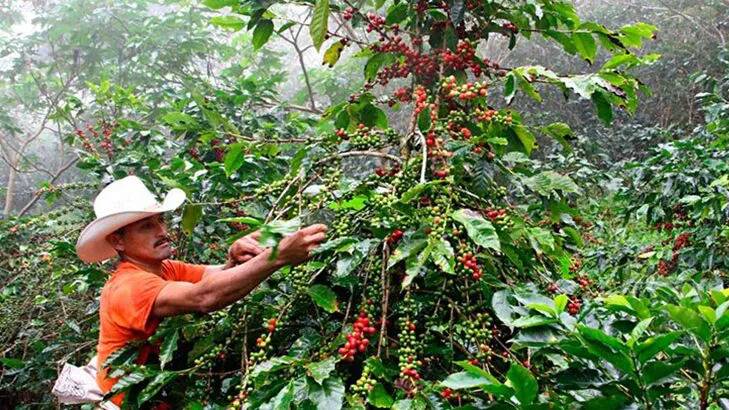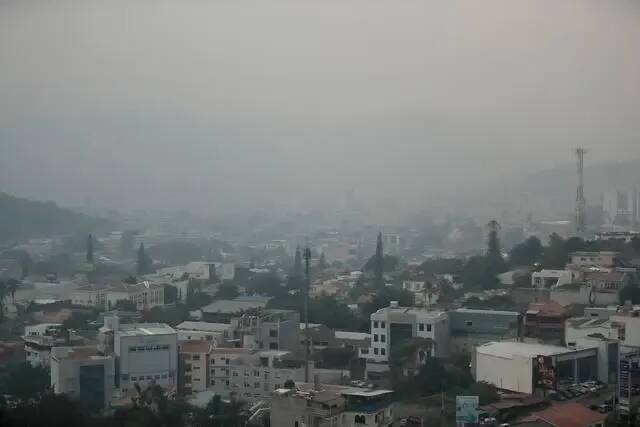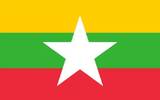Coffee leaf rust is high! Honduran coffee production will be reduced by 24%
Recently, the United States Department of Agriculture released the status of the coffee industry in the Central American country of Honduras. According to the report, Honduras is the largest producer and exporter of washed Arabica coffee in Central America, but Honduras has recently suffered a series of problems that have led to reduced production.
According to the report, coffee production in Honduras is expected to reach 5.5 million bags (60 kg / bag) in fiscal year 2023, down 24% from the previous year. The decline in coffee production is due to weather changes, a high incidence of coffee leaf rust and persistent labor shortages. As a result, exports are expected to be 5 million bags in fiscal year 2023, compared with 6.2 million bags in fiscal year 2022, down 19%.

Recently, Honduras has been in summer, but due to the influence of El Ni ñ o, the temperature in Honduras reached a new high, experiencing the hottest and driest year since 1992, with the highest temperature of 38-40 ℃. Hot and dry weather has caused frequent fires, and large areas of mountains and forests have been plunged into flames. It is estimated that more than 150000 hectares of forests have been affected this year.
Gas released by forest fires, coupled with exhaust emissions, industrial exhaust and other factors, the central region of Honduras (Distrito Central) launched a red alert indefinitely in early May due to severe air pollution, and announced on the 20th that 7 of the country's 18 provinces have launched a red alert, 2 provinces have launched a yellow alert, and the remaining 9 provinces have launched a green alert.

It is understood that the threshold of coffee leaf rust is 0-5% is a low incidence, while 5-20% indicates a moderate incidence. Honduras is affected by weather conditions, coffee leaf rust has a high incidence, and the average incidence of leaf rust is 5.8%.
Among them, La Paz (9.7%), Francisco Morasan (8.2%), Comayagua (6.9%), Copan (6.2%), Cortes (5.9%), Santa Barbara (5.8%), El Paleso (5.7%) and Olanjo (5.2%).
It is still summer in Honduras in May, but in June, when the rainy season is approaching, coffee rust spores will be spread by Rain Water and the wind, which may further increase the incidence and eventually continue to affect production in the new season.
In addition, poor production has also affected coffee exports, which fell by 8 per cent from 2.88 million bags of coffee between January and early May, compared with 3.13 million in the same period last year, according to the Honduran Coffee Institute (IHCAFE). In addition, according to data from the Border Office, 300000 bags of coffee are exported informally to neighbouring countries (El Salvador, Nicaragua and Guatemala).
However, the government has begun to take action and, through an executive decree, will grant a 12% exemption from the sales tax on coffee, a policy aimed at reducing production costs. In addition the Central Bank of Honduras constantly reviews its monetary credit and foreign exchange policies every year in order to reduce the impact of prices on coffee production and consumption and increase the income of farmers.
In addition, recently, the fifth round of negotiations on the free trade agreement between China and Honduras was held in Tegucigalpa, the capital of Honduras. The two sides have conducted comprehensive and in-depth consultations in the areas of trade in goods, trade in services, investment and rules, and made positive progress, which will increase the export of coffee and other commodities to China.
Important Notice :
前街咖啡 FrontStreet Coffee has moved to new addredd:
FrontStreet Coffee Address: 315,Donghua East Road,GuangZhou
Tel:020 38364473
- Prev

The barista overturned the scene! Smile first to respect and call mom first!
▲ Click to pay attention| Daily Boutique Coffee Culture Magazine Coffee Workshop As the saying goes, if you often walk by the river, there are no shoes that don't get wet. Even if they have been standing behind the bar for several years, experienced baristas will lose their horses at a certain moment, leaving the clean and tidy countertops in chaos that only occurs when they are novices. Shh! in their
- Next

Introduction to the development of planted varieties industry in Myanmar coffee producing areas in Asian countries
In Asia, there are many coffee-producing countries, such as Laos, Indonesia, East Timor, Thailand, China and Myanmar. Myanmar The Republic of the Union of Myanmar is a Southeast Asian country
Related
- What effect does Italian American coffee with filter paper have? Will coffee taste better if it is put on filter paper at the bottom of the powder bowl?
- What is the color difference in coffee beans? What are the characteristics of honey processed coffee beans? Why are the anaerobically treated coffee beans uneven in color?
- How does novice Xiaobai quickly get started and make coffee? Newbies learn to make coffee by hand and share the specific steps and process process!
- Costa tea has a shelf life of 100 years?! Expert: Unable to verify
- It's a huge uproar! American milk addition was rejected by Manner employees?!
- Mocha pot coffee bean recommendations| How fine and how much powder should be used for grinding? What parameter ratios do I need to use to make milk with Mocha pot coffee?
- What are the characteristics of the world's top ten coffee beans treated with Costa Rica honey? How to make black honey kadura from Tarazhu Pilon Processing Plant taste good?
- How to make deep-roasted coffee? What grinding water temperature does authentic Jamaica Blue Mountain No. 1 coffee use to brew it well?
- Selected high-grade rose summer coffee flavor tasting guide Why Panama rose summer has the aroma of flowers and fruits
- What equipment does a novice Xiaobai need to buy to learn to make coffee? Filter cup electronic scale bean grinder manual flushing pot purchase guide

